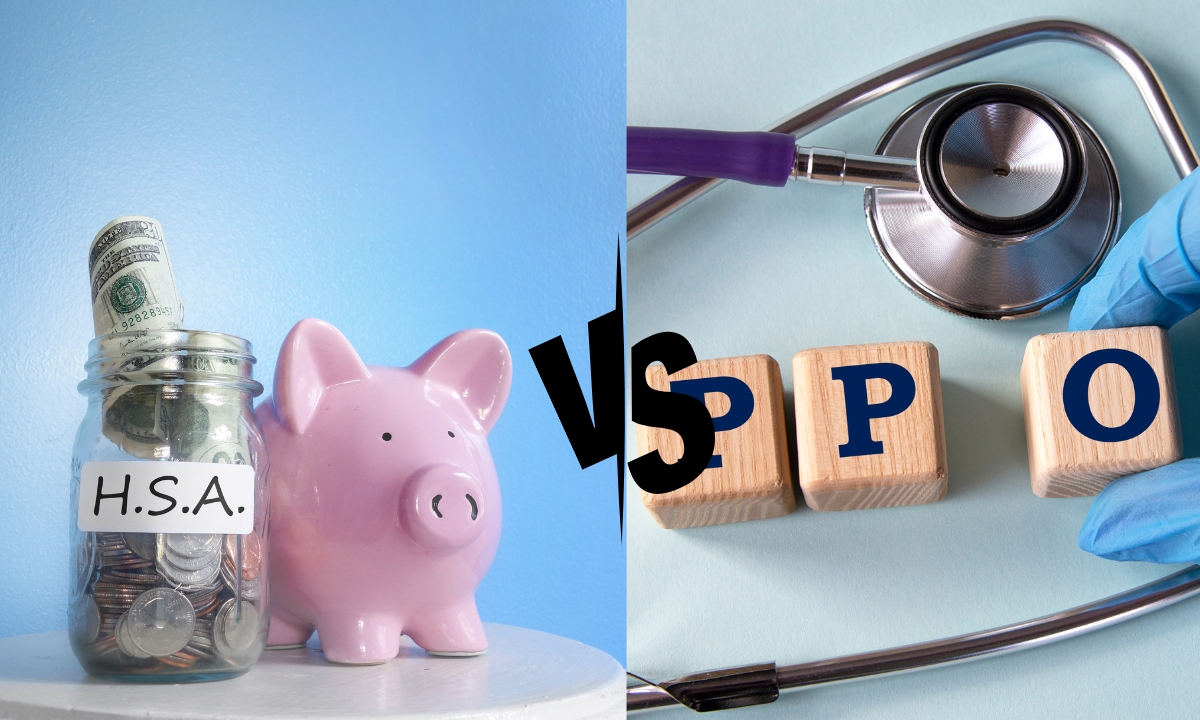Health Insurance
Health Reimbursement Plans
As a business owner, you shape the health of your company and the well-being of your team. Implementing a Health Reimbursement Plan (HRP) gives you a dynamic way to provide medical expense coverage tailored to your employees’ needs. Your customizable health benefits package can be one that reflects your company values and commitment to your team’s health and wellbeing.
There are many HRP options available, and each one offers its own unique benefits. So how do you know which way to go? Let’s walk through the types of health reimbursement plans so you’ll have a clear understanding of your options, and can make an informed decision about your health benefits strategy so your business stands out as a leader in employee health management.
What Is a Health Reimbursement Plan?
A Healthcare Reimbursement Plan (HRP) is an employer-funded plan that reimburses employees for out-of-pocket medical expenses and, in some cases, insurance premiums. Unlike other health savings accounts, the funds come solely from the employer and are not deducted from an employee’s salary.
Who Do Health Reimbursement Plans Work Best For?
The versatility of HRPs means they can be an excellent fit for a range of employer and employee scenarios.
Account-Based Health Plans vs. Healthcare Reimbursement Plans (such as FSA or HSA)
Account-Based Health Plans like FSAs and HSAs involve employee and sometimes employer contributions, offer tax benefits, and provide employee control over funds, but are linked to high-deductible plans and have strict rollover rules. In contrast, HRAs are entirely funded by employers, offer reimbursements for eligible medical expenses without being tied to other plans, and boast greater flexibility without mandatory employee contributions.
Types of Health Reimbursement Plans
With evolving healthcare needs and employer strategies, Health Reimbursement Plan offerings have diversified. Employers must grasp the different HRPs available—including HRAs, QSEHRAs, ICHRAs, and Integrated HRAs—to select the right fit for their business’s unique needs.
Health Reimbursement Arrangements (HRAs)
The HRA is the foundational model from which other variants have stemmed. In this arrangement:
- Employers allocate a specific amount of pre-tax dollars for employees to pay for healthcare expenses.
- Reimbursements made from the HRA are tax-free for the employee.
- Unused funds might roll over to the next year, depending on the employer’s policy.
- HRAs are exclusively employer-funded.
Qualified Small Employer Health Reimbursement Arrangements (QSEHRAs)
Tailored for small employers, QSEHRAs cater to companies that don’t offer group health insurance to their employees. The distinct features of QSEHRAs are:
- They are designed specifically for employers with fewer than 50 employees.
- Employers can reimburse employees tax-free for medical expenses, including individual health insurance premiums.
- There’s a cap on the annual allowance, adjusted annually for inflation.
- Employees must provide proof of minimum essential coverage to get reimbursements.
Individual Coverage Health Reimbursement Arrangements (ICHRAs)
A relatively new entrant in the HRP world, ICHRAs came into being with regulatory shifts in recent years. Their uniqueness lies in:
- Employers can offer ICHRAs to employees to purchase individual health insurance on the open market.
- There is no maximum limit to the amount an employer can contribute.
- Employers can segment employees into different classes (e.g., full-time, part-time) and offer different benefits accordingly.
- All reimbursements are tax-free if the employee is covered under an individual health insurance plan.
Integrated HRAs
These HRAs are combined with traditional group health insurance plans. The key characteristics of Integrated HRAs are:
- They are designed to supplement group health insurance, helping employees pay for out-of-pocket expenses.
- Employers can set aside a specific amount for reimbursements, over and above the group insurance coverage.
- Like other HRAs, Integrated HRAs are funded solely by the employer, with reimbursements being tax-free for employees.
- The integration ensures that employees still benefit from the broader coverage of a group health plan, with the added flexibility of an HRA for additional expenses.
Excepted Benefit Health Reimbursement Arrangements (EBHRAs)
EBHRAs are a specialized type of HRA with their own set of distinct features:
- Designed to complement a traditional group health plan, but employees aren’t required to be enrolled in the primary plan to benefit from an EBHRA.
- Employers can contribute up to a certain annual limit, which is adjusted for inflation.
- Funds from EBHRAs can be used for copays, deductibles, and other out-of-pocket expenses, but not for insurance premiums.
- Like other HRAs, they are funded solely by the employer, and reimbursements are tax-free for employees.
Paying for Healthcare with an HRA
HRAs have emerged as a popular tool for employers to assist employees with their healthcare expenses. Whether you’re considering implementing an HRA for your organization or you’re an employee trying to understand how it can benefit you, it’s essential to grasp both the advantages and the potential limitations of these plans. In this section, we’ll explore the pros and cons of utilizing HRAs for healthcare payments.
Benefits of HRAs
- Flexibility for Employers: HRAs allow employers to set a budget that aligns with their financial capabilities. Whether it’s determining the amount of funds allocated or defining which medical expenses are eligible, HRAs offer flexibility.
- Tax Advantages: Both employers and employees benefit from tax advantages. Employers get a tax deduction for amounts contributed, and employees receive the funds tax-free.
- Employee Autonomy: Employees have the freedom to choose the healthcare services and providers that best suit their needs, promoting a sense of autonomy in their healthcare decisions.
- Potential Rollover: Depending on the employer’s policy, unused funds in certain HRAs might roll over to the next year, providing a cushion for future expenses.
- Customization: Employers can customize HRA offerings based on employee classes or specific needs, ensuring that the benefits provided align with workforce demographics and requirements.
- Reduction in Healthcare Costs: With an HRA, employees are often more cost-conscious about healthcare spending, potentially leading to a reduction in overall healthcare costs.
Limitations of HRAs
- Funding Caps: Some types of HRAs, like QSEHRAs and EBHRAs, have annual contribution limits, which may not cover all of an employee’s healthcare expenses.
- Complexity: Managing and understanding the intricacies of HRAs, especially with various types available, can be complex for both employers and employees.
- Eligibility Restrictions: Some HRAs have specific eligibility criteria, such as the need for employees to have minimum essential coverage, which can create barriers for some individuals.
- Potential Loss of Unused Funds: In some HRA setups, unused funds at the end of the year may not roll over, leading to a “use it or lose it” scenario.
Choosing to work with a seasoned HRA administrator such as Take Command can transform the way you approach HRAs. With their extensive expertise, they can guide you through the complexities of HRA management, turning potential challenges into advantages for your business.
Contributing to an HRA
Employer contributions to HRAs mark them as a distinct option in the array of health benefit offerings. If you’re exploring HRAs for your business, it’s important to recognize that these plans are exclusively employer-funded. We’ll address key questions around HRA contributions to clarify how they operate within your company’s healthcare benefits framework.
How much will be contributed to my HRA?
Employers decide the contribution to HRAs based on their budget, chosen HRA type, and benefits strategy, with potential variation across employee categories. For details on your specific HRA, consult your employer or HR department.
Who can contribute to my HRA?
HRAs are exclusively employer-funded. This means only your employer can contribute to your HRA. Employees cannot make direct contributions to their HRAs, unlike Health Savings Accounts (HSAs) or Flexible Spending Accounts (FSAs).
How much can be contributed to my HRA?
The contribution limits for HRAs largely depend on the specific type of HRA:
Traditional HRAs: There is no set maximum limit. The employer determines the contribution based on their health benefit strategy and budget.
QSEHRAs (Qualified Small Employer HRAs): These have set annual contribution limits that are adjusted for inflation.
ICHRA (Individual Coverage HRA): There’s no maximum contribution limit. Employers can decide based on their budget and health benefit goals.
EBHRAs (Excepted Benefit HRAs): They have a specific annual contribution limit, adjusted yearly for inflation.
How much can employers contribute to Qualified Small Employer HRAs?
Annual QSEHRA contribution limits are adjusted for inflation by the IRS. The latest update caps self-only coverage at a certain amount and family coverage at a higher threshold. For current limits, consult the latest IRS guidelines or speak with an HR/benefits expert.
Take the Next Step in Optimizing Your Healthcare Benefits
HRAs offer a flexible and tax-advantaged way to manage healthcare costs for both employers and employees. Whether you’re considering a traditional HRA, a QSEHRA, an ICHRA, or just seeking clarity on your current plan, understanding how HRAs work is vital in maximizing their potential. If you have further questions or need personalized advice on selecting or managing your HRA, don’t hesitate to reach out to our expert team.
Take command of your healthcare expenses — contact us today to ensure your HRA is working optimally for you and your family.
Frequently Asked Questions about HRAs
How are Funds Accessed in an HRA?
Funds in an HRA are accessed through reimbursement. Employees pay for eligible expenses upfront, submit a claim with necessary documentation, and then are reimbursed by the employer from the HRA.
Does an HRA roll over from year to year?
The rollover of unused HRA funds depends on the employer’s policy. Some HRAs allow unused funds to carry over to the next year, while others may have a “use it or lose it” policy.
How much is contributed to an HRA?
The contribution amount is set by the employer. For QSEHRAs, there are specific annual contribution limits set by the IRS, while ICHRAs have no preset maximum contribution limit.
Can I use an HRA with health insurance?
Yes, HRAs are often used in conjunction with health insurance to cover out-of-pocket expenses. ICHRAs specifically require participants to have individual health insurance.
Is an active insurance policy required to participate in an HRA?
For traditional HRAs, it’s not always mandatory. However, for ICHRAs, participants must have individual health insurance coverage to receive reimbursements.
Who owns an HRA?
The HRA is owned by the employer. It’s an arrangement for the employer to reimburse employees for medical expenses.
Does the money in HRA accounts earn interest?
Typically, HRAs do not earn interest. They are accounts for reimbursement purposes, not savings or investment vehicles.
What are considered eligible expenses under HRAs?
Eligible expenses generally include medical care costs as defined by the IRS, such as doctor visits, medications, and surgeries. The specific eligible expenses might vary based on the employer’s plan design.
Can HRA funds be used to cover family medical expenses?
Yes, many HRAs allow employees to use funds for the qualified medical expenses of dependents, such as a spouse or children. Always refer to your specific HRA plan details.
What is the maximum reimbursement for HRAs?
The maximum reimbursement is typically the total amount contributed to the HRA for the year. For QSEHRAs, specific annual limits apply, while other HRAs might have different limits set by the employer.
What happens to the money in an HRA if an employee leaves the job or retires?
Unused funds in an HRA typically remain with the employer when an employee leaves or retires. However, specific policies can vary, so it’s crucial to consult your HRA agreement or HR department.
Related Posts
- Find out about HRA well being plans, HRA healthcare & HRA medical health insurance
For enterprise house owners, providing your staff a well being reimbursement association is a no…
- How well being reimbursement plans work
Well being reimbursement plans, in any other case often known as HRAs, well being reimbursement…
- THE ROLE OF HEALTH SAVINGS ACCOUNTS IN BUSINESS HEALTH INSURANCE PLANS
As a small enterprise proprietor, you could already provide medical health insurance protection advantages to…


















